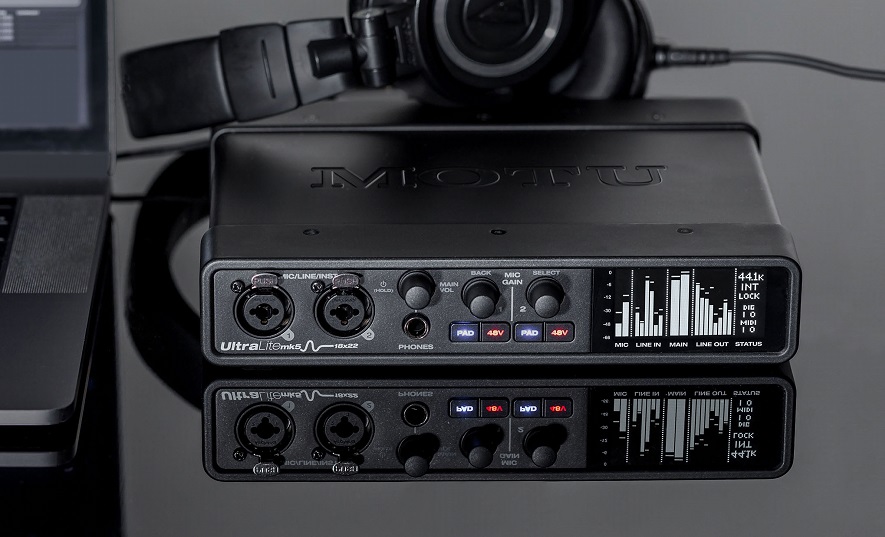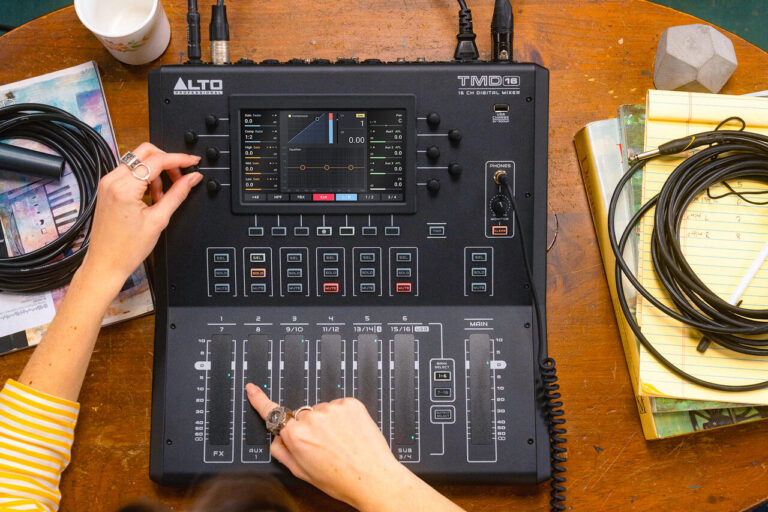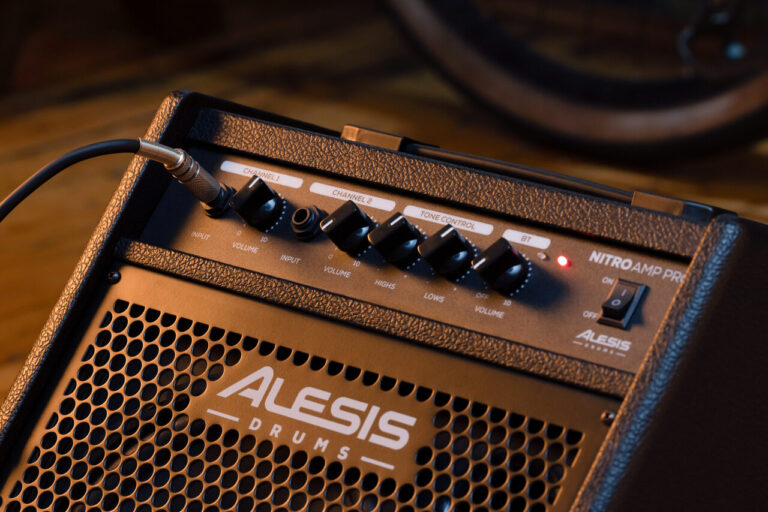MOTU has posted a firmware update and new “Gen 5” driver download for its popular UltraLite-mk5 18 x 22 half-rack USB audio interface, now available for all UltraLite-mk5 owners at no charge at motu.com/download. The new firmware adds significant new features, including Wi-Fi access, A/B monitoring, monitor grouping, and talkback.
“The UltraLite-mk5 essentially got a feature boost from our just-released 828 audio interface because they share the same DSP-driven CueMix 5 mixer and front-end app,” said Jim Cooper, MOTU Director of Marketing. “While developing these features for the new 828, it made perfect sense for our engineering team to add them to the UltraLite-mk5 as well.”
If the UltraLite-mk5 is connected to a computer on a Wi-Fi network, users can control everything wirelessly from the CueMix 5 app running on mobile devices or other computers on the same network — even multiple devices at the same time. Users can manage access to the UltraLite-mk5 (and other on-line MOTU devices) with network discovery and security features. Each MOTU device on the network can be assigned a password, for situations where security is needed. For example, if the devices are being used in a school lab or performance venue, staff can access all mixing features and settings, while students or audience members are blocked.
Newly added control room features include A/B monitor select, monitor grouping, and talkback.
Users can connect two sets of studio monitors (A and B) to outputs 1-2 and 3-4 respectively, and then switch between them with one click in the CueMix 5 app to instantly compare their mix on each set of speakers.
For studios with multi-channel monitoring setups, the new Monitor Group feature allows users to include any combination of analog outputs to be controlled by the UltraLite-mk5’s main volume knob on the front panel, and its equivalent “soft” knob in the CueMix 5 app.
During recording sessions, the engineer or producer sitting at the computer can press the Talk button in the CueMix 5 app to communicate with musicians via a connected microphone. Settings are provided to control where the talk signal goes, its volume, and how much other channels are dimmed while talkback is engaged.








